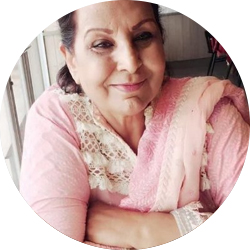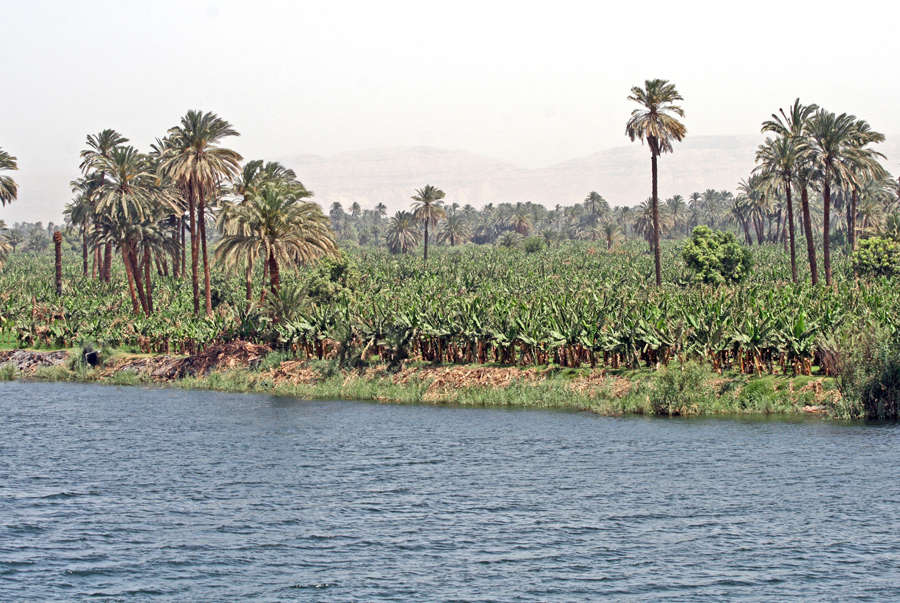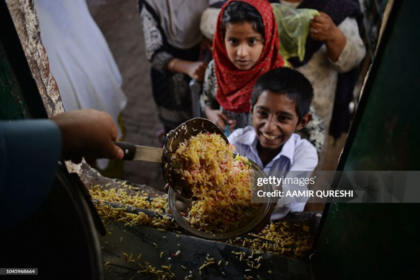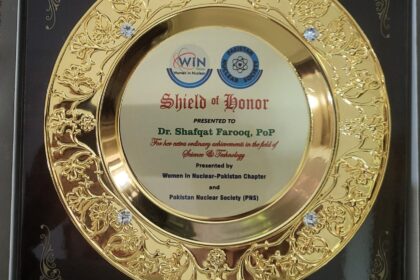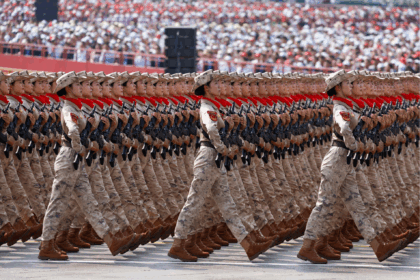Hi readers, Do you know who said this?
Aik Hon Muslim Haram Ki Pasbani Key Liye
Nile Key Sahil Se Le Kar Ta Bakhak-e-Kashgher,
(Following are the meaning of this poetic verse)
May the Muslims unite in watching over the Shrine,
from the bank of the Nile to the deserts of Kashgher.
He was the great thinker of Pakistan, and poet Allamah Dr. Muhammad Iqbal who said this in his poetic collection Bang-e-Dara,
that took him 20 years to complete after which, it was published in 1924 which means, Allamah Iqbal conveyed,
this powerful idea to Muslims Ummah
nearly 100 years ago.
Why did he select Kashgher? What was the message that he actually sent to us?
Kashgher is a city in Xinjiang region of Peoples Republic of China which is located at the bank of River Kashgher at the foot of mountain Tian Xian.
Due to its location in the middle of the routes coming from Khoqand: the Fergana valley in Central Asia that has now been divided between Uzbekistan, Kyrgyzstan, Tajikistan, and Kazakhstan.
About 200 Km from the present day Kashgher, is the silk road coming from the West near the border of Kyrgyzstan, from where, routs to Balkh in the Southwest and Ferghana to the Northwest goes.
Kashgher is connected to the capital of Pakistan, Islamabad by Karakoram Highway, and Khunjarab Pass and also to Kyrgyzstan by Turgart and Arkishtam pass. Thus,
It is the gateway to Europe and Fareast.
Dr. Iqbal mentioned Kashgher because he was of the view that,
The inter-connection of groups of bright and brilliant people who share common characteristics lies in the freedom of the East, but the people of Asia are, ignorant of this principle.
The actual wording of this poetic verse are,
Rat-o-Zabt -e-Millat-e-Baiza Hai Mashriq Ki Nijaat
Asia Wale Hain Iss Nukte Se Ab Tak Be-Khabar
What a powerful idea and a deep philosophy?
Deep philosophy means,
Our beliefs (together we can prosper),
Our thinking (to develop ways and means to be together), and
Our viewpoint (we should work with each other for mutual benefits).
Meaning thereby that, East will be liberated only if her people connect with and work for each other’s benefits.
Isn’t it amazing that what we are doing today is exactly what Allamah Iqbal perceived 120 years ago?
This is called, “The vision that speaks for itself”.
But the question remains,
Do the East was really ignorant of the point that Allamah Iqbal has made? The answer is big NO. Why? Just read the following.
Pakistan launched a bilateral project on April 20th, 2015, after Xi Jinping and Nawaz Sharif became Chinese President and Prime Minister of Pakistan, respectively in 2013. Nawaz Sharif signed 51 agreements and MOUs valued at $46 billion.
The purpose was to connect Pakistan with China through China Pakistan Economic Corridor (CPEC), to develop and modernize infrastructure comprising roads, rail, air and energy transportation system and to connect the deep-sea port “Gwadar” to Xin Jiang that borders the countries comprising Mongolia, Russia, Kazakhstan, Kyrgyzstan, Tajikistan, Afghanistan, Pakistan and India through Uygur autonomous region in China and beyond.
Was this not the outcome of a desire to reach out, be together, and work together for mutual benefits?
Indeed, it was.
This was the vision of PM of Pakistan and President of China.
Under the initiative, several special economic zones (SEZs) were to be opened by China for rapid economic growth : joint space and satellite programs was also the part of this initiative.
Under CPEC, hundreds of miles of highways and railways were completed and capacity for electric power generation increased many folds. Country’s first solar power plant was inaugurated in May 2015 while the “Orange Line Metro Train System” was launched in Lahore in October 2020. This was the first of its kind in the country aimed at providing:
Respectable, fast, and economical transport for intracity travel.
The era between 2013-2018 witnessed the potential of CPEC to transform the country but, it was put into cold storage in 2018. Probably we were not interested in trade but in aid (My next blog will be on this topic) through which we promote our personal interests.
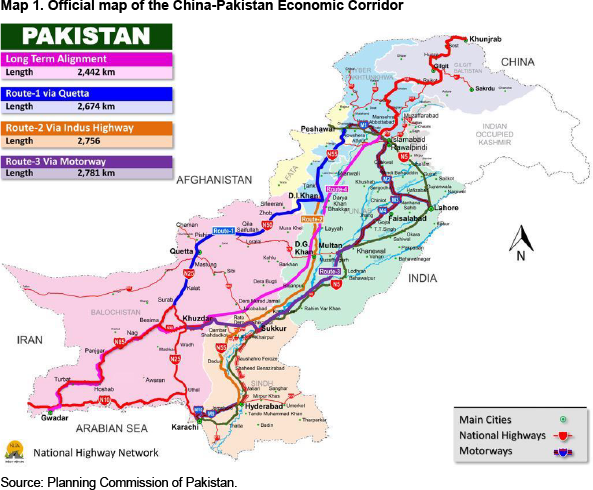
Picture 1. Gwadar port linkage with Kashgher.
CPEC is a part of Belt and Road Initiative (BRI) through which connectivity, communication, cooperation and trade (CCCT) between countries of Eurasia: multiple of the words Europe and Asia was to be encouraged. The strip between the Black and Caspian seas is part of Asia. Europe lies to the West of this line and Asia to the East.
The Belt and Road initiative is a massive infrastructure project that aims to stretch around the globe and is a vision of Chinese communist Party led by the President Xi Jinping.
Picture below exhibits
Infrastructure developed to reach out, be together, and work with neighbour for mutual benefits.
The dream of Dr. Allamah Iqbal came true, isn’t it?
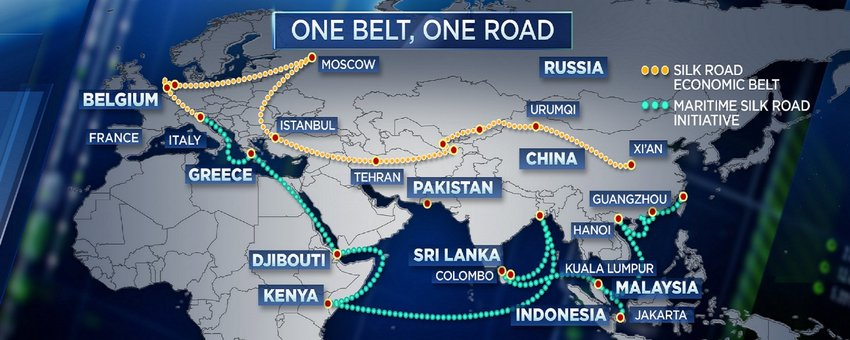
Picture 2. One belt one road Initiative of Xi’s China
BRI Initiative was initially devised to link East Asia and Europe through land routes in Pakistan, Afghanistan, Kazakhstan, Kyrgyzstan, Tajikistan, Turkmenistan, and Uzbekistan but has now been extended to over four thousand miles into Europe making Central Asia the epicenter for connecting Eastern and Western markets through the Land Silk Road Economic Belt (LSREB) and the Maritime Silk Road (MSR). The two are now collectively referred to as Belt and Road Initiative (Figure 3).
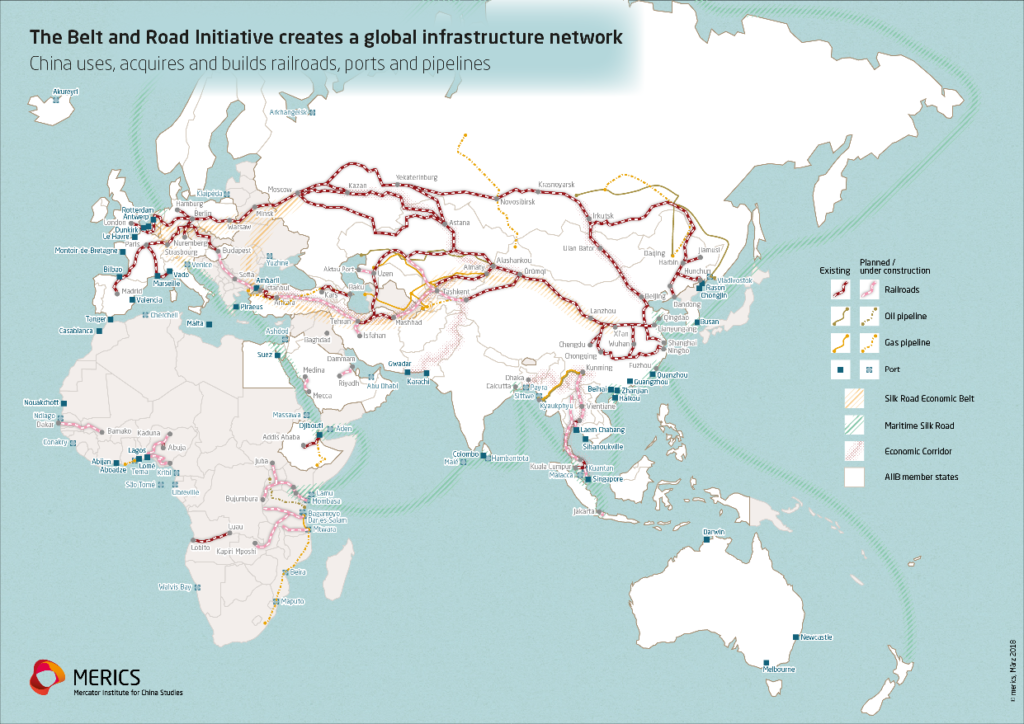
Picture 3. Belt and Road Initiative
Xi’s vision included: creation of a vast network of railways, energy pipelines, highways., streamlining border crossings both Westward through the mountainous former Soviet Republic and Southward towards Pakistan, India, and the rest of Southeast Asia and, to fund hundreds of SEZs and industrial areas designed to create jobs.
The 21st, Century Maritime Silk Road would accommodate expanding maritime trade traffic through China’s port development program along the Indian Ocean, from Southeast Asia to East Africa and parts of Europe.
To date, 147 countries accounting for two-third of the world’s population and 40 percent of global GDP have signed the project or has indicated an interest in doing so.
However, the question again arises:
where is the bank of Nile in this scenario?
To get the answer, we have to look towards Saudi Arabia.
Saudi Arabia is building a futuristic mega-city called NEOM in the desert bordering the Red Sea as seen in the picture 4
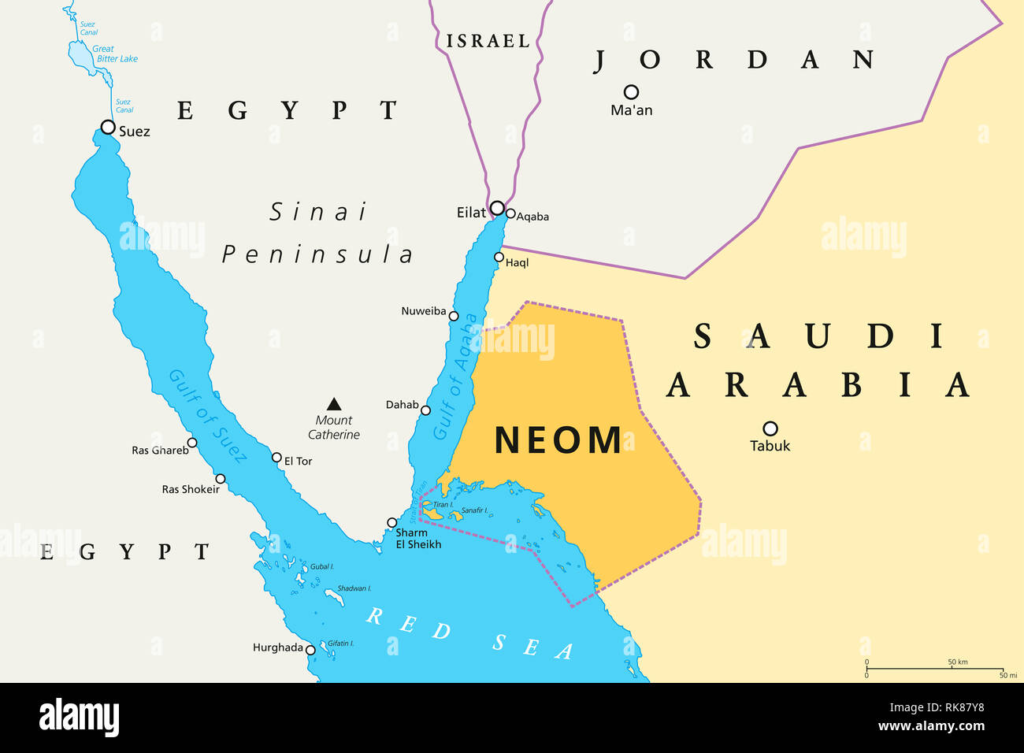
Picture 4: the NEOM city
NEOM is a combination of Greek word Neos, means “new,” and M: the mustaqbal, Arabic word for “future”. This is crown Prince Mohammad Bin Salman’s vision for 2030. Now look at picture below exhibiting Red Sea, Gulf of Suez and River Nile.
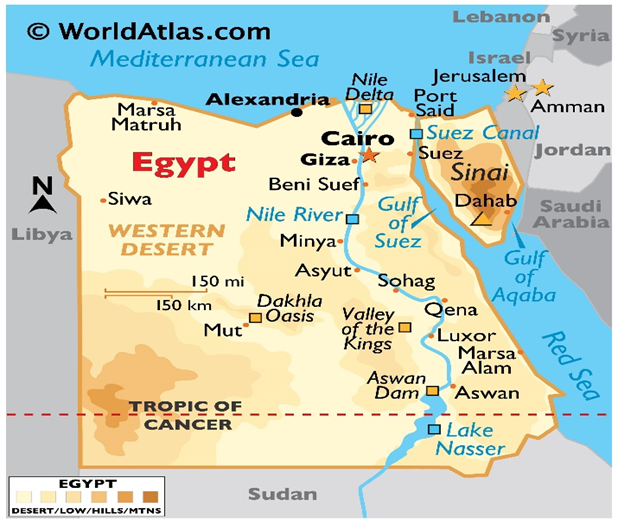
Picture 5.
The point to be mentioned here is that:
Saudi Arabia is planning to build a bridge over the Red Sea that would connect Africa and Asia that will take trade between the two continents to unprecedented levels.
The bridge will be built at the closest point (Nabq in Egypt and Ras AL Sheikh Hamid in Saudi Arabia) leaving the two continents only 10 miles apart. Look at picture 6 below
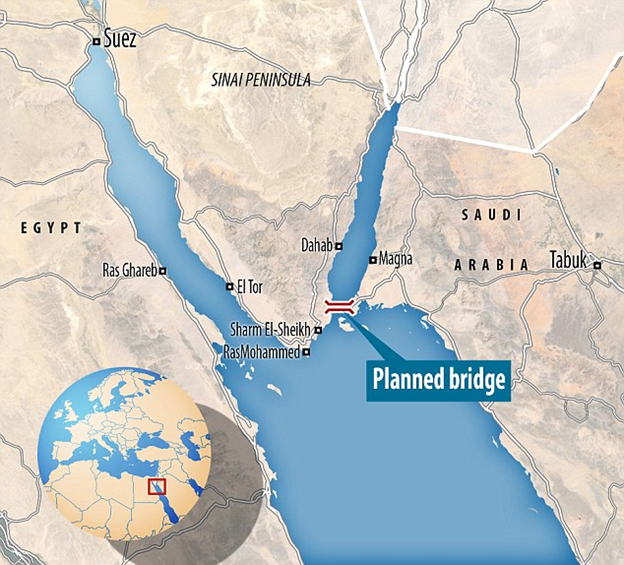
Picture 6, showing the Red sea, Gulf of Suez and Bridge connecting Egypt and Saudi Arabia.
while picture 7 below shows the connectivity all the way from the Bank of Nile to sand of Kashgher
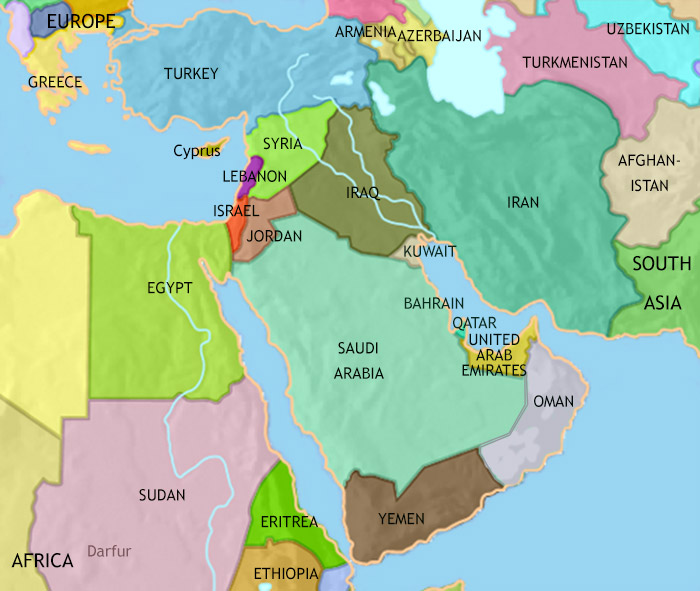
Picture 7. See how the city of River Nile (Egypt: already connected with Israel: the land of Aqsa Mosque) will be connected through Saudi Arabia, Kuwait, Iran, Pakistan, and China: to the City of Kashgher
An outcome of the powerful idea floated 120 years ago.
Did you see dear readers, how the vision 2030 of Crown Prince of the Kingdom of Saudi Arabia (Converting desert into NEOM city), did a miracle happen?
Asia is no more ignorant. East is awake and connected.
What do you think?
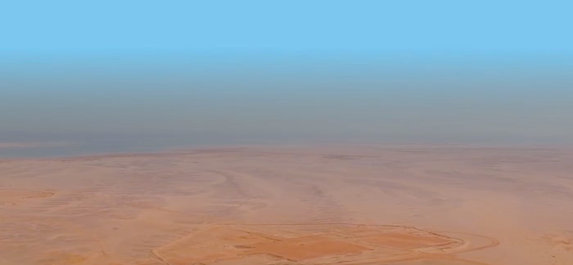
The desert converted to
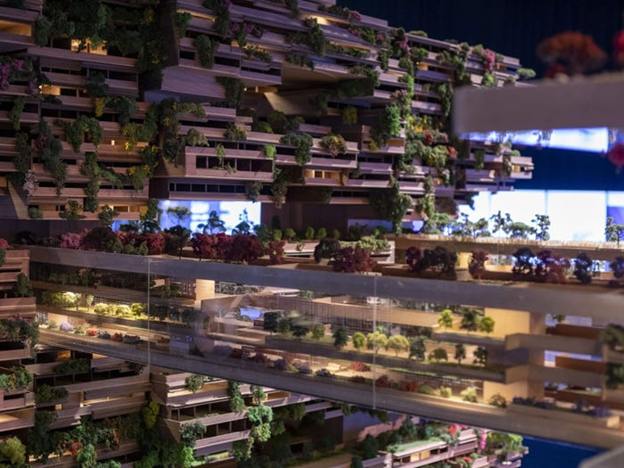
The NEOM city
Who can believe that a person half of the age of leader(s) in Pakistan, can think of modernizing and expending his country into technological hub of the future? He did this to create an alternate base for expanding country’s economy (previously dependent on “Petrodollar”) envisioning that petrodollars alone will not be sufficient for the future demand of the country?
Pakistan needs such a vision which the country largely lack. The initiative taken in the past in this direction (CPEC project) has been put into cold storage: a shame, isn’t it?
NEOM city will be 33 times the size of New York and will be 16-borough (self-governing walled town) on the Red Sea coast that will cover 10,230 square miles. It will:
Draw on “cloud seeding” for producing rainfall not naturally possible in the desert,
Have the “education system” with classes taught by holographic teachers,
Be illuminated by a giant artificial moon,
Have flying taxis for travelers,
Have glow-in-the-dark sand added to its beaches and glow-in-the-dark blue waves caused by “red tide” like of what the tourists have seen at night near Sam Mun Tsai beach in Hong Kong.
A100 mile long vertical skyscraper “The Line” has been planned for NEOM city and will house millions of people. (Pl. see figure 9 below).
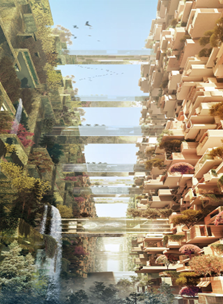
The line: a vertical skyscraper
The Line: the two skyscraper-sized vertical buildings, covered in reflective glass with regulated temperate and carbon neutral microclimate, lush hanging gardens, and a high-speed train service to connect both ends in 20 minutes.
The Oxagon: A floating/integrated port and logistics facility in NEON, arranged around water filled squares connected by canals and covering 97square miles will act as the industrial and research hub of the city ( Please see picture below).
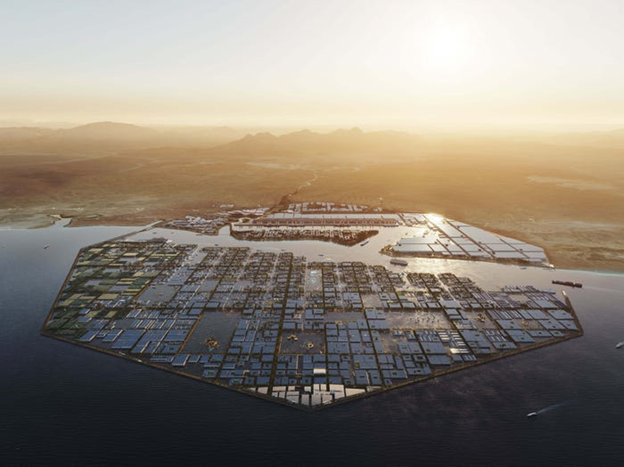
The Oxagon
The question is:
Do we have a the capacity and the brain that can think of going to Oxagon? It will be a facility where one can learn methods and techniques to solve our problems, and to absorb knowledge generated by KSA, Egypt and Israel: the most scientifically advanced country in the world.
Get knowledge from wherever you can.
This what our prophet Mohammad piece be upon him taught us.
What do you think dear readers?
That’s all for now. See you next week. Till then, take care. Bye.
